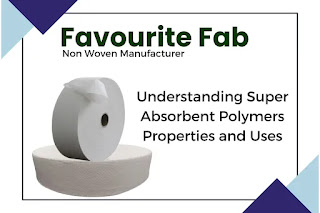Nonwoven Material: Everything You Need to Know – Applications, Benefits, and Future Trends
Nonwoven materials have become an essential component in various industries due to their adaptability, affordability, and unique properties. Unlike traditional woven fabrics, nonwoven materials are made by bonding fibers together using mechanical, chemical, or thermal processes. This blog explores nonwoven materials' applications, benefits, and emerging trends shaping the future.
Applications of Nonwoven Materials
1. Healthcare and Medical Industry
Uses:
Surgical masks and gowns
Medical dressings and bandages
Disposable gloves
Sanitary napkins and diapers
2. Automotive Industry
Uses:
Car seat covers
Cabin air filters
Sound insulation
Trunk liners and carpets
3. Agriculture
Uses:
Crop covers and plant protection
Weed control fabric
Greenhouse shading material
4. Personal Care and Hygiene
Uses:
Wet wipes and baby wipes
Feminine hygiene products
Cosmetic facial masks
5. Packaging and Industrial Uses
Uses:
Shopping bags and tote bags
Industrial cleaning wipes
Geotextiles for construction
Benefits of Nonwoven Materials
Cost-Effective: Requires less labor and lower production costs than traditional fabrics.
Lightweight and Durable: Offers strength while maintaining flexibility and comfort.
Eco-Friendly Options: Many nonwoven materials are recyclable and biodegradable.
Customizable: Available in various textures, thicknesses, and compositions for different applications.
High Absorbency and Filtration Efficiency: Ideal for medical, hygiene, and filtration applications.
Future Trends in Nonwoven Materials
Sustainable and Biodegradable Nonwovens: Increasing demand for environmentally friendly materials.
Advanced Smart Nonwovens: Integration of nanotechnology for enhanced functionalities like antimicrobial properties and temperature regulation.
Growing Use in Automotive and Aerospace Industries: Lightweight nonwoven composites for better fuel efficiency and noise reduction.
Innovative Applications in Fashion and Apparel: Nonwoven textiles in disposable and reusable clothing.
Conclusion
Nonwoven materials are transforming multiple industries with their diverse applications and advantages. As technology advances, the future of nonwoven fabrics is set to become even more sustainable and innovative. For premium quality nonwoven materials, reach out to Favourite Fab, your trusted supplier for high-performance nonwoven fabrics tailored to your needs.




Comments
Post a Comment